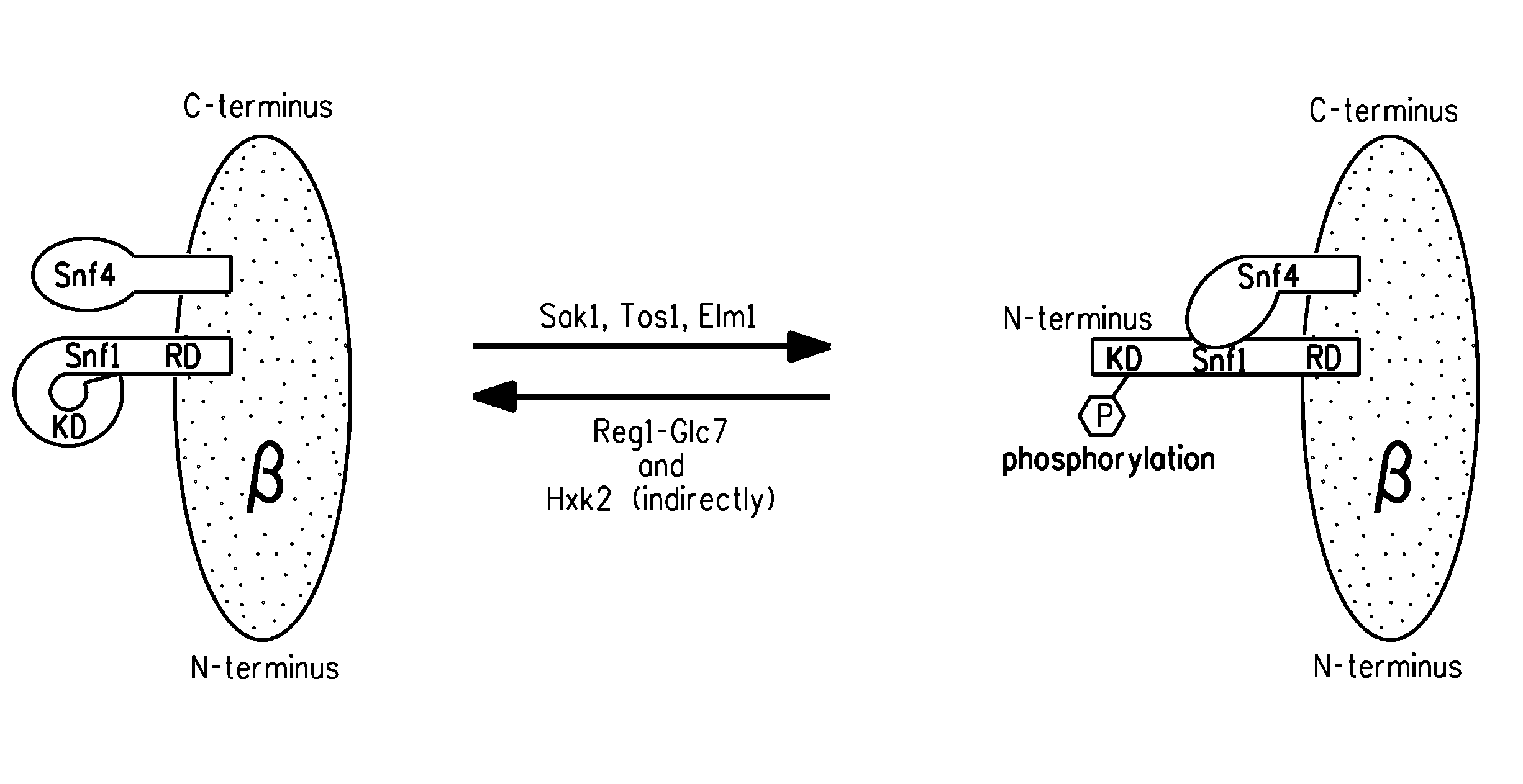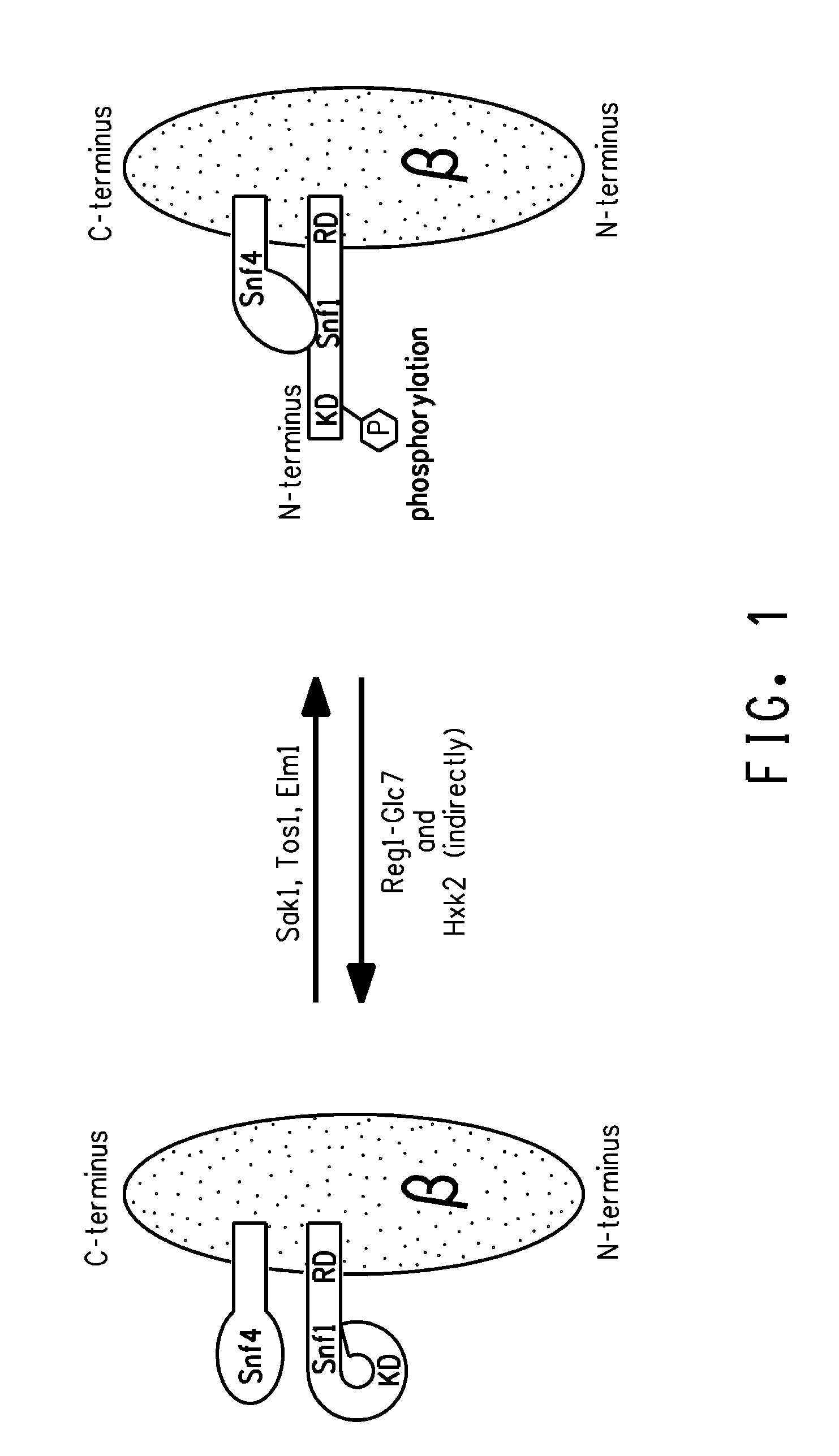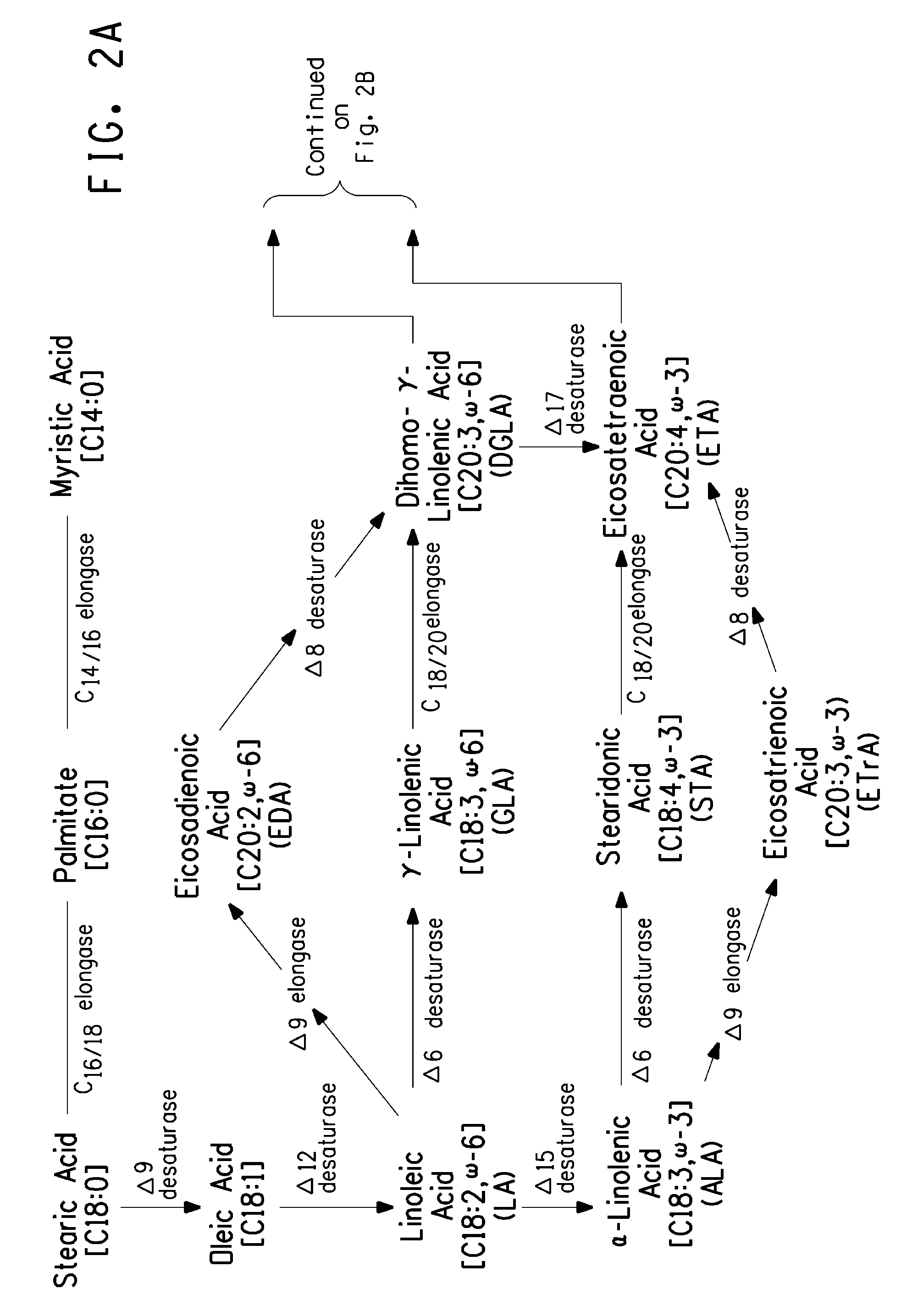Manipulation of snf1 kinase for altered oil content in oleaginous organisms
a technology of snf1 and kinase, which is applied in the field of biotechnology, can solve the problems of many details concerning the cellular role of snf1 protein kinase and its regulation, and the previous studies of snf1 knockouts have not been performed in an oleaginous. achieve the effect of increasing the total lipid conten
- Summary
- Abstract
- Description
- Claims
- Application Information
AI Technical Summary
Benefits of technology
Problems solved by technology
Method used
Image
Examples
example 1
Identification of the Yarrowia lipolytica Gene Encoding the Snf1 α-Subunit of the Heterotrimeric SNF1 Protein Kinase
[0313]An ortholog to the Saccharomyces cerevisiae serine / threonine protein kinase Snf1 (GenBank Accession No. M13971; SEQ ID NO:2) [“ScSnf1”] was identified in Yarrowia lipolytica by conducting BLAST searches using ScSnf1 as the query sequence against the public Y. lipolytica protein database of the “Yeast project Genolevures” (Center for Bioinformatics, LaBRI, Talence Cedex, France) (see also Dujon, B. et al., Nature, 430 (6995):35-44 (2004)).
[0314]One protein sequence, given the designation “YlSnf1”, was identified as having substantial homology to ScSnf1. Identity of the Y. lipolytica sequence of SEQ ID NO:27 was evaluated by conducting National Center for Biotechnology Information [“NCBI”] BLASTP 2.2.18 (protein-protein Basic Local Alignment Search Tool; Altschul et al., Nucleic Acids Res., 25:3389-3402 (1997); Altschul et al., FEBS J., 272:5101-5109 (2005)) search...
example 2
Deletion of the Gene Encoding the Snf1 α-Subunit of the Heterotrimeric SNF1 Protein Kinase in Yarrowia lipolytica Strain Y2224 Increases Total Accumulated Lipid Level and Lipid Desaturation
[0317]The present Example describes use of construct PYRH10 (FIG. 5B; SEQ ID NO:39) to knock out the chromosomal SNF1 gene from Yarrowia lipolytica strain Y2224, thereby producing strain Y2224 (snf1Δ). The effect of the Snf1 knockout on accumulated lipid level was determined and compared. Specifically, knockout of Snf1 resulted in increased total lipid (measured as percent of the total dry cell weight [“TFAs % DCW”]) and lipid desaturation in the cell, as compared to cells whose native Snf1 had not been knocked out.
[0318]Construction Of pYRH10: Plasmid pYRH10 was derived from plasmid pYPS161 (FIG. 5A), which contained the following components:
TABLE 5Description of Plasmid pYPS161 (SEQ ID NO: 40)RE Sites AndNucleotidesWithin SEQ IDDescription OfNO: 40Fragment And Chimeric Gene ComponentsAscI / BsiWI1...
example 3
Deletion of the Gene Encoding the Snf1 α-Subunit of the Heterotrimeric SNF1 Protein Kinase in EPA Producing Yarrowia lipolytica Strain Y4184U Increases Total Accumulated Lipid Level and Lipid Desaturation
[0336]The present Example describes the use of construct pYRH18 (FIG. 6; SEQ ID NO:53) to knock out the chromosomal SNF1 gene from an EPA producing engineered strain of Yarrowia lipolytica, specifically, strain Y4184U. Transformation of Y. lipolytica strain Y4184U with the SNF1 knockout construct fragment resulted in strain Y4184U (snf1Δ). The effect of the Snf1 knockout on accumulated lipid level and EPA production was determined and compared. Specifically, knockout of SNF1 resulted in increased total lipid and lipid desaturation, as compared to cells whose native Snf1 had not been knocked out.
[0337]Construct pYRH18: Plasmid pYRH18 was derived from plasmid pYRH10 (Example 2, SEQ ID NO:39). First, a 1448 bp 5′ promoter region (SEQ ID NO:54) of the YlSNF1 gene (SEQ ID NO:26) replaced...
PUM
| Property | Measurement | Unit |
|---|---|---|
| temperature | aaaaa | aaaaa |
| temperature | aaaaa | aaaaa |
| temperature | aaaaa | aaaaa |
Abstract
Description
Claims
Application Information
 Login to View More
Login to View More - R&D
- Intellectual Property
- Life Sciences
- Materials
- Tech Scout
- Unparalleled Data Quality
- Higher Quality Content
- 60% Fewer Hallucinations
Browse by: Latest US Patents, China's latest patents, Technical Efficacy Thesaurus, Application Domain, Technology Topic, Popular Technical Reports.
© 2025 PatSnap. All rights reserved.Legal|Privacy policy|Modern Slavery Act Transparency Statement|Sitemap|About US| Contact US: help@patsnap.com



